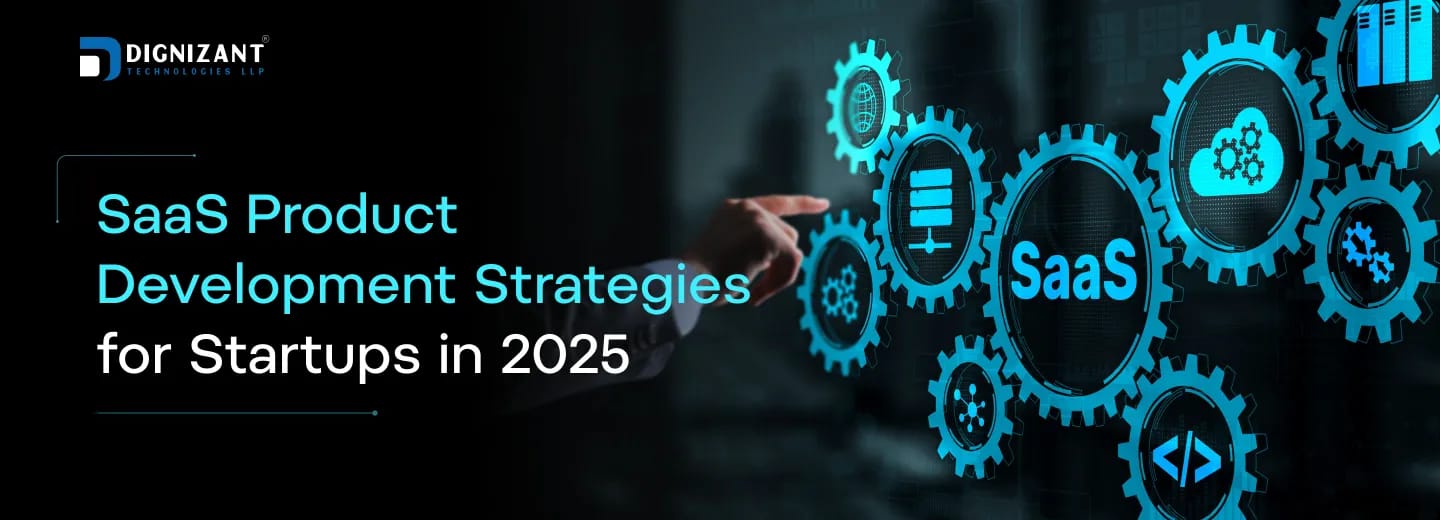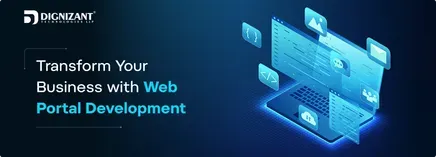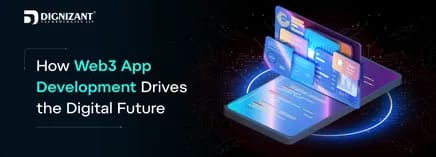SaaS Product Development Strategies for Startups in 2025

Contributor
Femil Savaliya
Uploaded
30 June, 2025
Read Time
9 Minutes
In the fast-paced digital world, a SaaS (Software as a Service model) has become one of the most efficient and scalable business models for startups. By removing the requirement for physical installations and providing real-time accessibility, SaaS solutions are transforming how modern businesses operate. As we step into 2025, the SaaS landscape continues to evolve with advanced technologies and elevated customer expectations.
For start-ups, navigating the dynamic space needs a roadmap. In this guide, you'll get an overview of how to build a SaaS product that meets the special considerations and challenges startups face in 2025.
Understanding SaaS Product Development
SaaS development is the method of developing, hosting and maintaining cloud applications that can be accessed by end users via subscription. Unlike standard software that runs on your computer, SaaS applications are hosted on distant servers and accessed over the internet.
Key components include:
- Cloud-based architecture
- Subscription billing systems
- Continuous delivery and updates
- Security and compliance readiness
Unlike traditional software, with SaaS you need a lightweight, user-focused and scalable approach from day one. The emphasis has to be on customer values swiftly and iteratively while still maintaining long term scalability and retention.
Why SaaS Product Development Matters in 2025
The Software as a service (SaaS Model of Software delivery) has transformed the way the software is developed, managed and consumed. With the global SaaS market expected to cross $370 billion by 2030, startups have huge potential if they get the fundamentals right.
SaaS product development allows startups to:
- Minimize infrastructure costs.
- Rapidly prototype and test.
- Reach a global audience instantly.
- Deliver continuous updates and improvements.
But those same benefits have also drawn intense competition. That’s why following best practices is crucial to making sure long-time progress and success.
1. Understand the Challenge and Know Your Audience
Success starts with precision. Before diving into development, you need a real-world issue that’s worth solving. Startups need to contact potential users, run some surveys and analyze existing alternatives to know if the idea really meets a need. A vague or generalized concept will not get traction; having a laser-like focus on one single issue is much more effective.
Once the issue is validated, defining your target audience becomes the next logical step. Developing detailed user personas supports teams better understanding goals, frustrations and preferences. When every function is developed with a specific user in mind, it boosts adoption rates and decreases misused development attempts on unrelated functionality.
2. Begin with a Minimum Viable Product (MVP)
Rather than spending months designing a fully featured app just go small first and design only your minimal, viable product. The MVP offers startups an inexpensive way to gather real-world feedback from the market and its users. Not only does such an approach reduce time-to-market, but it also mitigates risks of developing features no one wants.
Launching with a basic version also creates room for continuous learning and iteration. Founders can prioritize enhancements depending on actual user behavior instead of guesses. This cycle of feedback, improvement and release forms the cornerstone of an adaptive and user-first product development process.
3. Build for Scalability from the Start
A successful platform should be developed on a solid and scalable foundation. As user requirements increase, the system should be able to manage more traffic, data and requests without breaking. Utilizing modern cloud platforms and adopting architectures such as microservices or serverless systems makes it simpler to manage scaling barriers efficiently.
Scalability is not only increasing the number of users, but also processes those with efficiency. A well designed backend saves expense, boosts performance, further creates margin when adding new features down the line. For startups, investing in scale is a way to avoid unbearable infrastructure pivots.
4. Deliver a Seamless User Experience
In an era of digital convenience, people won’t stand for ungainly or confusing connectors. Startups require to concentrate on clear design, easy navigation and smooth user flows. Even the most dominant functionality loses value if users struggle to interact with it. Design and ease of use need to lead the way in developing anything.
Iterating the platform is essential to make it really consumer-friendly. That includes wireframes, A/B testing and feedback loops that give designers feedback on how the interface should be calibrated based on how the users actually use it. It earns trust, increases engagement and powers retention three things every product requirement.
5. Embrace Agile and DevOps Practices
Speed and agility are the best benefits for any new business. Agile development supports teams in concentrating on small and attainable goals so they can make continual progress. Breaking work into small sprints, constant review of progress and open communication, which allows faster iterations and responsiveness to change.
With Agile, DevOps automates and makes testing, deployment and monitoring efficient. Docker, Jenkins, Kubernetes are tools that allow development teams to ship changes quickly while also ensuring product stability. In combination, these practices develop a workflow that balances innovation with stability.
6. Make Security a Non-Negotiable Priority
2025 For some reason people are more conscious about what’s being done with their data and the security is even more of a concern. From encrypting to username and password verification, developing with security-first is not only safe for your users but for your company’s reputation as well. Error to protect sensitive information may have significant valid and financial consequences.
Some businesses have to meet specific standards such as GDPR or HIPAA. Examining standards in the early stages of the program can reduce time and minimize business risk. Partnering with experts or depending on experienced SaaS development services makes certain your solution is protected against threats and compliant with laws since the beginning of the journey.
7. Enable Easy Integration with Other Tools
In today’s integrated digital world, people expect the tools they use to work well together. Strong APIs provided and integrations with things like Stripe, Slack or CRMs all add value and make the product more appealing. Compatibility is becoming an essential rather than a nice-to-have.
Developers should make sure that their APIs are properly documented and simple to implement. Webhooks or other plug-and-play modules can also help speed up partner embedding. Users are more likely to adopt and attach around with a platform that effortlessly integrates with their existing system of work.
8. Use Data Analytics for Smarter Decisions
You need to know how your users engage with your product is key to making trustworthy changes. Tools for analysis can monitor everything from session length and click paths to dropout points and feature use. These revelations signal what’s working and where users are getting tripped up.
With the proper metrics set up, startups can find out which features are generating engagement, which need tweaking and which get no use at all. The data based roadmap truly helps prioritize features and makes sure that the product evolution is tailored based on real user needs, not just internal assumptions.
9. Craft a Flexible and Transparent Pricing Model
A Properly structured out price strategy can drive growth exponentially. If you have a flexible plan, which can be a freemium, a tiered pricing or a usage based plan, your users can select the pricing they require or they can afford. Transparent pricing is a measure that reduces friction in customers' decisions.
Frequent monitoring of user behavior allows them to fine-tune the pricing over time. For example, knowing when users upgrade or churn can help you decide on tweaks to plan features or pricing tiers. It makes it easier for your customers to understand and grow within your model and it simplifies your conversion and retention rates.
10. Invest in Post-Launch Support and Continuous Iteration
The job is not finished once you launch. Attracting users with responsive help channels, documentation and in-app guidance contributes to brand loyalty and minimizes churn. Positive support experiences can drive early adopters toward lifelong and organic promotion for the product.
Also important is the further development of the system. By collecting feedback, prioritizing the feature requests and consistently deploying the updates, continuously demonstrates to users that their voice counts. Iterating is continued so that the product is improved and competitive in a constantly growing market.
11. Assemble the Right Team for the Job
The first step is nothing but the right team, the team that has the same vision and that fits well regarding skills. Startups should be on the lookout for team members that are versatile, team players and can wear multiple hats. In the early-stage ecology, creativity, adaptability and clear communication are necessary.
For instances where you don’t have the important experience in-house, partnering with SaaS development service experts can be an invaluable help. These partners bring deep professional
expertise, process maturity as well as industry insights that support accelerating your time to market while making sure high quality in design, development and deployment.
12. Stay Ahead by Following Industry Trends
Transformation is a moving target. New trends such as AI automation, personalized experiences and even industry-specific solutions are redefining what a digital product is in any given industry. This is a trend that startups need to take into consideration to keep pace against their competitors.
Following thought leaders, attending industry events and experimenting with new technologies helps keep the product future-ready. Platforms that are built with their users, rather than reacting to market shifts, locate themselves as industry leaders instead of followers.
13. Optimize Onboarding for Faster User Activation
Initial impressions matter and an onboarding is a chance to demonstrate to the user that your product can solve their pain quickly. Confusion and a long onboarding leads to important drop off, users will never make it to the value of a product. You can save plenty of loyalty by streamlining this step.
The onboarding process is supported by step-by-step tutorials, tooltips, progress indicators and additional support materials. Also, don't forget, the faster a user discovers the value, the more chance they will use it as a long-term customer and advocate your platform.
14. Implement Feature Flags for Controlled Releases
Rolling out new features to everyone at once can be risky, particularly if they trigger unexpected bugs or useability problems. With advantages flags (or toggles), you can bring updates to a small segment of users first. It allows for the testing of stability, thus gaining early feedback to fix things before release.
Controlled feature releases are incredibly useful for startups iterating fast. They mitigate the potential downtime or bad user experience risks, while still enabling constant innovation. You can also A/B test new features to measure them before rolling them out to everyone.
15. Foster a Community Around Your Product
Developing a user community can efficiently boost connection and brand reliability. Whether it’s a forum, Discord server, Slack server or LinkedIn group, keeping a place for your users to share tips, ask questions and give feedback reinforces a relationship between your team and your customers.
Communities also help drive insights, detect function requests and create organic word-of-mouth. In the competitive world of SaaS Product Development, a passionate user base is your best marketing campaign and also your best source of ongoing product feature ideas.
Future-Proofing Your SaaS Product
Tech is evolving quickly. Your SaaS product must be adaptable to stay related.
1. Combine Growing Technologies
Utilize AI, machine learning and predictive analytics to enhance user experience and mechanize
processes.
2. Design for Global Scale
Add support for multi-languages, localization and dynamic billing systems to concentrate the international market.
3. Stay Ahead of Trends
Learn industry blogs, go to conferences and participate in startup communities to stay upgraded.
Standard Oversights Startups Should Avoid
Startups can seamlessly make mistakes that might prevent their SaaS journey. Watch out for:
- Building too many features before validating core use cases
- Ignoring customer feedback and real-world usage
- Choosing poor pricing models that don’t align with value
- Overlooking marketing and user procurement efforts
Preventing these risks can decrease time, money and attempt down the line.
Conclusion
SaaS product development for startups in 2025 requires tactical vision; agility and relentless focus on user value. By following these best practices from concept to launch and beyond you can help ensure that your startup not only builds something cool, it also can scale what it builds.
By following these best practices and ensuring you have availability to the right expertise, enclosing trusted established SaaS development services, startups can innovate impactful platforms that satisfy user’s needs and make a difference in a crowded market. Keep in mind that your objective is not only to create software it is to create solutions that provide long-term value and driving sustainable growth.
Latest Articles

Transform your business with web portal development that enhances user experience, streamlines operations, and drives digital growth.

Uncover how Web3 app development drives promotes transparency, and builds a user-owned, decentralized digital ecosystem for the future internet.

Unlock growth with Mobile App Analytics by tracking user behavior, improving performance, and boosting engagement through data driven insights.
FAQs
Ready to Take Your Business to the Next Level?
Unlock new opportunities with expert solutions designed to elevate your brand. From strategy to execution, we empower your business with the tools, technology and talent it needs to thrive in today’s digital world.